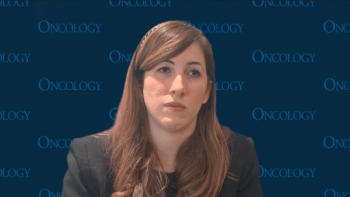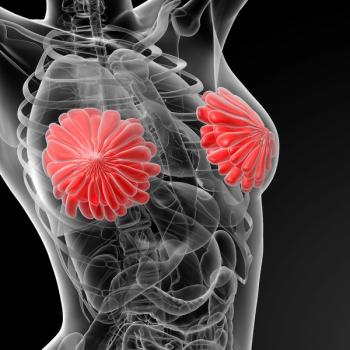
Could Low-Risk Breast Cancer Patients Benefit From Shorter Trastuzumab Treatment?
A subgroup analysis of Short-HER looked at the differences in 5-year DFS rates for 9 weeks vs 1 year of trastuzumab for HER2+ breast cancer patients.
A subgroup analysis of the Short-HER study showed no differences in 5-year disease-free survival (DFS) rates between 9 weeks and 1 year of trastuzumab treatment for certain low-risk patients with HER2-positive breast cancer, while high-risk patients do derive substantial benefit from the longer duration. The substantially reduced cardiotoxicity with the shorter duration of therapy suggests this could be an important option for some patients.
The full results of the Short-HER study were
The researchers broke the full cohort down into three risk groups based on pathologic tumor size and nodal status. The low-risk group included pT of 2 cm or less and N0 nodal status; intermediate-risk patients had pT of 2 cm or less and any N category or a tumor larger than 2 cm and N 0–3; high-risk patients had tumors larger than 2 cm and N 4+. These three groups represented 37.5%, 51.9%, and 10.5% of the cohort, respectively.
In the low-risk patients, the 5-year DFS rate was 91% with 1 year of trastuzumab treatment, compared with 92% with 9 weeks of therapy, for a hazard ratio (HR) of 0.96 (95% CI, 0.56–1.66). In intermediate-risk patients, the results were again similar, at 87% and 86%, respectively, for an HR of 1.05 (95% CI, 0.71–1.54). The longer duration of therapy was still clearly beneficial in the high-risk patients, with a 5-year DFS rate of 80% compared with 60% with 9 weeks of therapy, for an HR of 1.94 (95% CI, 1.07–3.53).
Conte stressed that the study was not powered to firmly conclude that the shorter duration of therapy is noninferior to the longer duration.
There were clear differences, however, with regard to cardiac toxicity. In the 1-year trastuzumab patients, 14.6% of low-risk patients had a grade 2 or higher cardiac event, compared with 5.1% with 9 weeks of treatment, for a relative risk (RR) of 2.85 (95% CI, 1.51–5.36). In intermediate-risk patients, these rates were 11.6% and 3.9%, for an RR of 2.9 (95% CI, 1.57–5.35), and in the high-risk group they were 14.1% and 3.3%, for an RR of 4.22 (95% CI, 0.96–18.5).
“Physicians can stop trastuzumab before 1 year in patients who develop a cardiac event during treatment without compromising efficacy and can consider shorter-duration trastuzumab treatment in patients at risk of cardiac toxicity and a low or intermediate risk of breast cancer relapse,” Conte said, according to a
Newsletter
Stay up to date on recent advances in the multidisciplinary approach to cancer.














































































